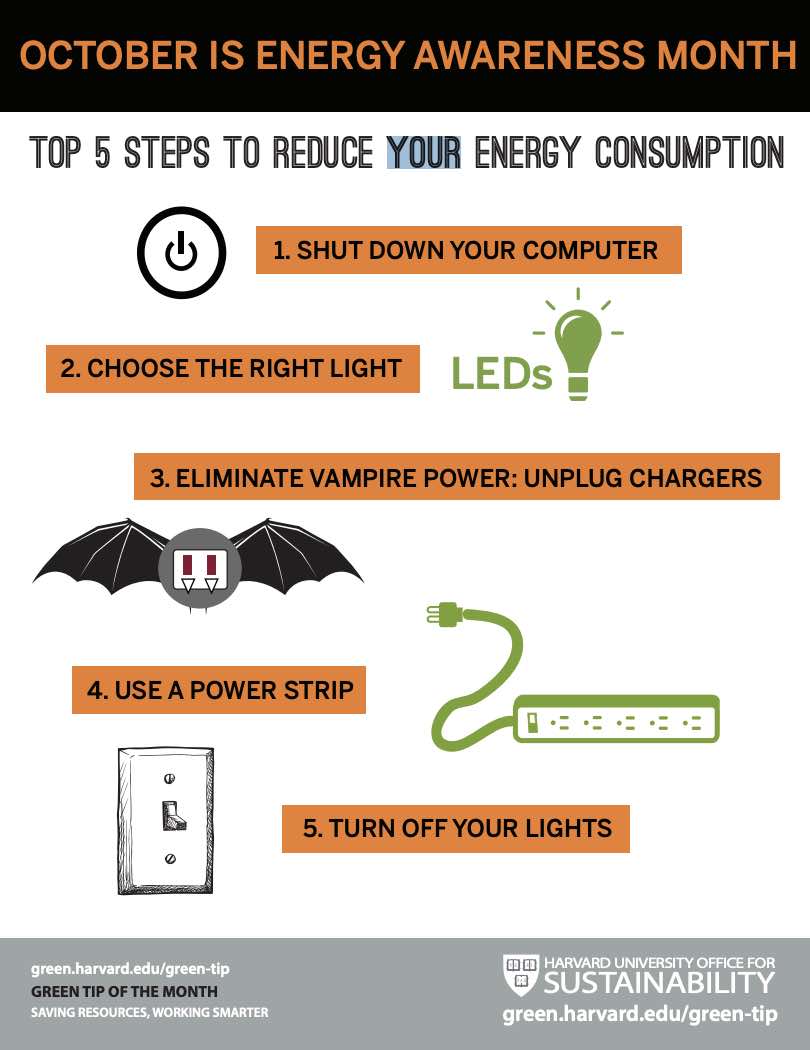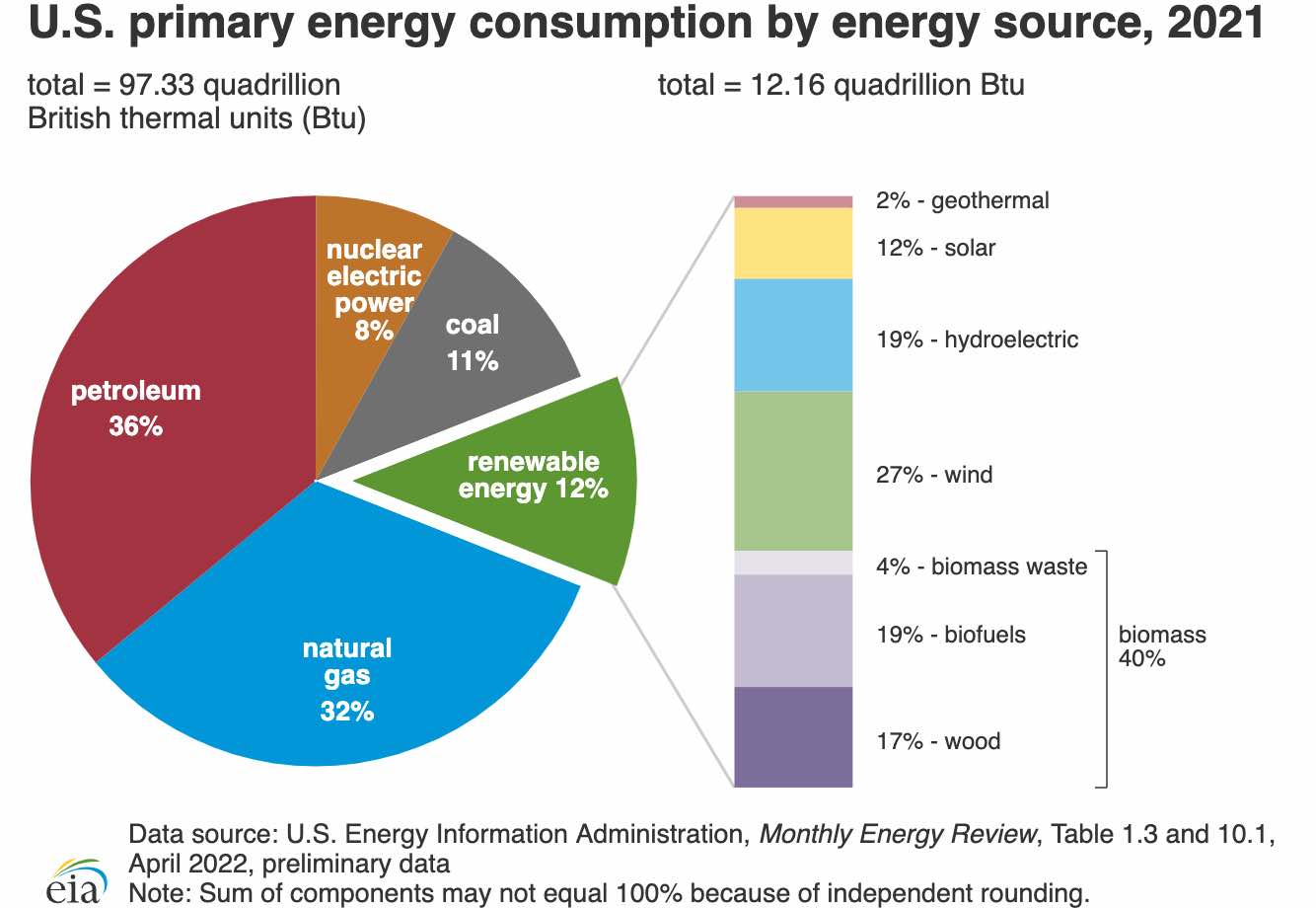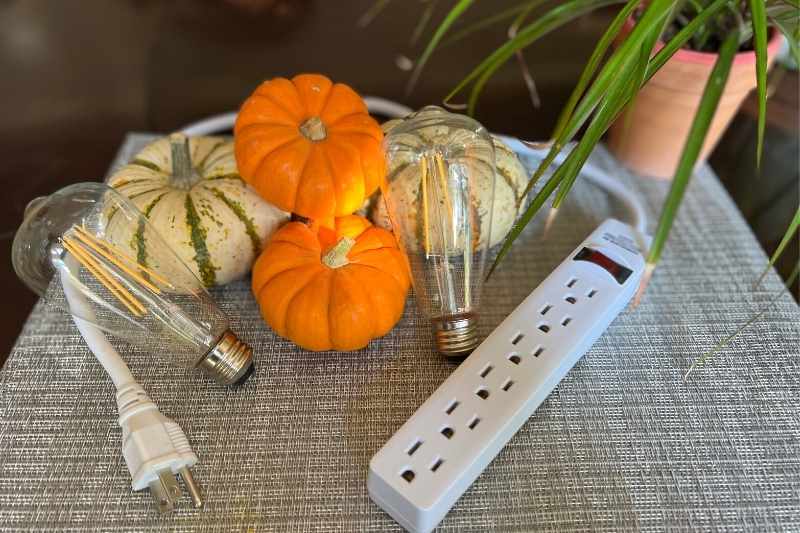Our Homes Consume Lots of Energy, But You Can Make an Impact in a Few Easy Steps.
October is recognized as Energy Awareness Month, and for a good reason. Energy is the dominant contributor to climate change, accounting for around 60% of total global greenhouse gas emissions, according to the United Nations. Learn more about how to slay the energy vampires in your home and save on electricity.
While it may seem like switching out your light bulbs for more efficient models isn’t going to make that much of an impact compared to energy behemoths like the manufacturing industry, think again. By replacing just five lightbulbs with LED lightbulbs per quarter, you can save $30-$80 on your energy bill over the course of the bulb’s life. It’s a high-impact way to implement sustainability in your home, saving 91.25 pounds of carbon each year, according to data collected by One Planet Life.
Households consume 29% of global energy and consequently contribute to 21% of resultant carbon dioxide emissions.
Those lightbulbs add up: if every person on the planet switched to energy-efficient models, a whopping $120 billion could be saved annually. In just the U.S. alone, switching to LEDs would save an estimated 38 million tons of CO2 emissions a year.
It’s not just lightbulbs, either. There are a plethora of ways you can drastically cut down on your family’s energy consumption and slay the energy vampires in your home.
Weeding Out The Energy Vampires
The U.S. Department of Energy makes an amusing connection between Energy Awareness Month and everyone’s favorite October holiday – Halloween.
“Halloween — or as we like to call it, Energyween — is just around the corner. While trick-or-treaters are roaming the streets in search of screams and sweets, a hidden terror could already be lurking in your home,” a DOE article by Public Affairs Specialist Paul Lester explains. “We’re talking about energy vampires — evil ghouls that suck electrical power from your appliances when you aren’t using them, taking a big bite out of your wallet.”

Unplugging devices and appliances when you’re not using them is a quick and easy way to slash energy vampires’ grip on your power usage. In fact, 23% of electricity consumed in homes is wasted by standby power. Make it even easier by plugging items into energy-efficient power strips that you can turn off several devices at the flip of a switch, Harvard University Office for Sustainability suggests.
When looking at upgrading electronics, always buy appliances, equipment, and electronics with the Energy Star label, the Natural Resources Defense Council recommends. These upgraded models use much less energy than those without the blue tag. It’s especially important for large devices that are always running and may contain planet-damaging chemicals, like a refrigerator.
One of the home’s most aggressive energy-eaters is a dryer, according to the Permaculture Research Institute. This one is an easy fix – hang clothes to dry – even partially – and get the benefit of fresh-smelling, air-dried laundry while cutting down on energy consumption.
Thinking About Switching to Renewable Energy? Take the Leap!
Renewable Energy is defined as energy from sources that are naturally replenishing but flow-limited, according to the U.S. Energy Information Administration.
The major types of renewable energy sources include:
- Biomass
- Wood and wood waste
- Municipal solid waste
- Landfill gas and biogas
- Biofuels
- Hydropower
- Geothermal
- Wind
- Solar

Although the COVID-19 pandemic stalled many energy projects in 2020, the use of renewables continued to grow, accounting for more than 80% of all new electricity capacity added in 2020.
Supporting renewable energy is also good for the economy. In the Clean Jobs America 2021 report, published by the National Association of State Energy Officials and the Energy Futures Initiative with support from over a dozen states, organizations and foundations, statistics showed that about three million Americans worked in clean energy. Clean energy remains the biggest job creator across America’s energy sector, employing nearly three times as many workers as fossil fuel extraction and generation.
While making big shifts in sourcing from renewable energy – like installing solar grids on your home – may make a huge impact, you don’t need to invest thousands in a home project to make a difference. There are lots of ways to slay the energy vampires in your home.
At least 50% of electric customers have the option to purchase renewable electricity directly from their power supplier, according to Energy.gov. Contact your electric company to find out more information on where your power is being sourced, and ask if sustainable options are available. You may pay slightly more for renewable energy products and services to offset the additional costs power companies incur in purchasing and/or generating electricity from renewable sources.
Saving Energy Saves the Planet… and Your Wallet
If reversing climate change isn’t enough to convince you, consider this: these changes add up when it comes to crunching numbers.
In a 2021 study conducted by the National Renewable Energy Laboratory that took a look at an all-electric residential community of nearly 500 homes in Fort Collins, Colorado., researchers discovered that with a varied approach, savings really added up.
With a combination of efficiency upgrades, Home Energy Management Systems (HEMS – technology within homes that help efficiently manage energy usage), and battery systems to minimize utility bills, homeowners can save an estimated $590 and 1.53 tons of carbon each year.
Shedding kilowatts from your monthly electric bill is obvious. But did you know there are government-funded credit and rebate programs that incentivize creating a more energy-efficient home?
The Inflation Reduction Act of 2022 includes an expansion of the Energy Efficient Home Improvement Credit (formerly the “Nonbusiness Energy Property Credit”). This non-refundable tax credit targets 30% of the costs of certain home efficiency investments, effective January 1, 2022, through December 31, 2032.
Eligible costs, up to qualifying amounts with a $1,200 maximum, include:
- Home energy audits
- Insulation and air sealing materials or systems
- Exterior windows/skylights
- Exterior doors
- Efficient heating and cooling appliances (electric or natural gas heat pump water heater; electric or natural gas heat pump; central air conditioning system; natural gas, propane, or oil water heater; natural gas, propane, or oil furnace or hot water boiler; biomass stove or boiler for home heating/hot water; oil furnace or hot water boiler)
- Electric panel upgrades to equipment with a load capacity of at least 200 amps (in conjunction with other efficiency improvements)
There are a number of rebates available through this legislation as well. Also, it’s worth a call to your electric company to see if they offer any rebates for making your home more efficient. A lot of providers will recycle old air conditioners, refrigerators, and other appliances and add a credit to your next bill.
Reducing your energy consumption may not be as difficult as you think. Small actions really do add up. By taking the initiative and implementing just a few of these changes into our everyday lives, we can collectively make a positive impact on our planet, one kilowatt at a time.
Check out the U.S. Department of Energy’s spooky tips on slaying those pesky energy vampires:

Written by Carley Kimball
Freelance Journalist and OPL Content Contributor
“I’ve always tried to implement planet-friendly practices in my life but didn’t quite realize just how much of an impact individuals can make until I was introduced to One Planet Life. I’m so excited to be able to utilize my professional skills to contribute valuable information and positive personal experiences to help make the world a better place.”











